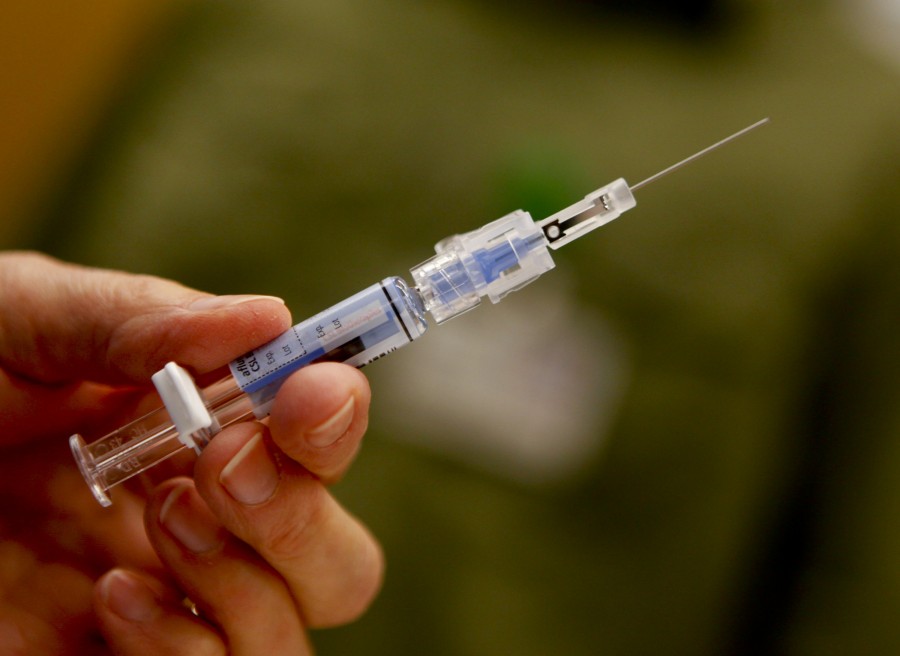NOVA Addresses Vaccine Controversy
September 9, 2014
By David Templeton
For sheer survival, we live with acceptable risks.
We eat knowing we might choke. We go down steps realizing we could break our necks. We drive fully aware of the 36,000 traffic fatalities each year.
That leads to the risk of vaccines. Science is clear: They are very low risk and historically effective in eliminating major deadly diseases from the nation and globe.
Enter what are called the “anti-vaxxers” — Jenny McCarthy and a growing minority of parents — who question vaccine safety and feed enough fear to cause a worrisome decline in immunization rates nationwide.
NOVA addresses this controversy in “Vaccines — Calling the Shots,” which airs at 9 p.m. ET Wednesday on PBS. The balanced look at the importance of vaccines gently but clearly concludes that vaccines are safe and effective, but without dodging or downplaying the mild, occasional serious and rare deadly risks vaccines can pose.
At a PBS press conference in July in Beverly Hills, Calif., during the TV critics summer press tour, the film’s writer/director/producer Sonya Pemberton said her challenge was acknowledging the fears of anti-vaxxers without implying their fears are based in science. History long has proven that vaccines are perhaps medicine’s greatest accomplishment. Smallpox has been eliminated worldwide. Polio, which once infected millions and killed thousands, has been eradicated in the United States and is endemic now in only three countries — Pakistan, Afghanistan and Nigeria. The rare case of once-common infectious diseases becomes big news. Case closed.
“Basically I approached it initially as someone who wanted to make a film that was largely in support of vaccination,” Pemberton said, noting she came from a family of doctors but still spent a year talking to parents. “What became clear to me over the period was we have this false polarity of us vs. them, people who are for vaccination and people who are against. In my experience — and the data is clear — that 90-percent-plus of parents, particularly in America, vaccinate. And the group that don’t vaccinate are around about 1 to 2 percent. It’s a very small group. So we have this artificial sense that it’s a great big divide.”
But the anti-vaxxers are a vocal group and they have made an ever-growing minority of parents wary of vaccines.
Here’s their logic: With infection risks greatly reduced through what’s known as herd immunity, their child already faces minimal risk of contracting the measles or whooping cough. So why expose them to the risk of vaccines?
But what that anti-vaxxer logic ignores is the concept of herd immunity — vaccine rates of 95 percent or higher that are necessary to prevent an isolated infection from becoming an outbreak or epidemic. When immunization rates fall below 90 percent, such situations as the measles outbreak of 2007 in Brooklyn, N.Y., can occur, with 15,000 infections and six deaths.
California announced last week that state immunization rates have dipped below 90 percent, with resulting outbreaks of measles and whooping cough.
Autism spectrum disorders are a key concern of anti-vaxxers, despite 30 studies that have debunked any link between vaccines and autism. Alison Singer, president of the Autism Science Foundation, encourages parents to have their children with autism immunized while saying she understands why pained parents embrace such explanations.
Yes, vaccines can cause swelling of the injection site, slight fever, or mild allergic reactions. The NOVA documentary also notes the rare seizure or cases in which a vaccine triggers a rare form of epilepsy, but these are conditions in which the child was genetically predisposed to develop in due time. There’s the rare cancer or chronic arthritis or even vaccine-induced infection of the disease the vaccine was supposed to prevent, polio being a prime example.
But from the start, the film keeps a focus on the infant turning red and choking from whooping cough (pertussis), or the child with a face riddled with smallpox or the whole ward of children stricken with polio lying in beds with legs harnessed inside thick braces.
Five hundred years ago, 1 in 3 children died before age 5, largely due to epidemic infections now controlled by vaccines, the World Health Organization states.
The U.S. Centers for Disease Control and Prevention says risks must be judged against “substantial, proven benefits” in a nation with “the safest, most effective vaccine supply in history.” Severe reactions occur “so rarely that the risk is difficult to calculate,” according to the CDC.
WHO says the historic success of the Salk and Sabin polio vaccines means more than 10 million people who would have been paralyzed are walking today. Most younger doctors nowadays have never seen a case of the measles, which once infected about 500,000 Americans a year, with 500 deaths and 48,000 hospitalizations.
Before a vaccine was developed in the 1920s more than 15,000 Americans a year died from diphtheria. Only one case of diphtheria has been reported to the CDC since 2004. An epidemic of rubella, or German measles, infected 12.5 million Americans in 1964-65, killing 2,000 babies and causing 11,000 miscarriages. In 2012, only nine cases of rubella were reported to the CDC.
Vaccines given to infants and young children the past two decades ”will prevent 322 million illnesses, 21 million hospitalizations and 732,000 deaths, with savings of upward to $300 billion in direct costs including medical expenses and more than $1.3 trillion in societal costs over that time, as children spared from illness will be able to contribute to society,” the CDC states.
So perhaps in too, low-key fashion, the NOVA documentary advocates low-risk, high-reward immunization of children. What is clear is that America must continue striving for herd immunity and advocate continued immunization even when infection rates fall to zero. It’s a shared responsibility with proven payoff.
———
“NOVA: Vaccines — Calling the Shots”
When: 9 p.m. Wednesday, WQED.
———
©2014 Pittsburgh Post-Gazette
Visit the Pittsburgh Post-Gazette at www.post-gazette.com
Distributed by MCT Information Services
















